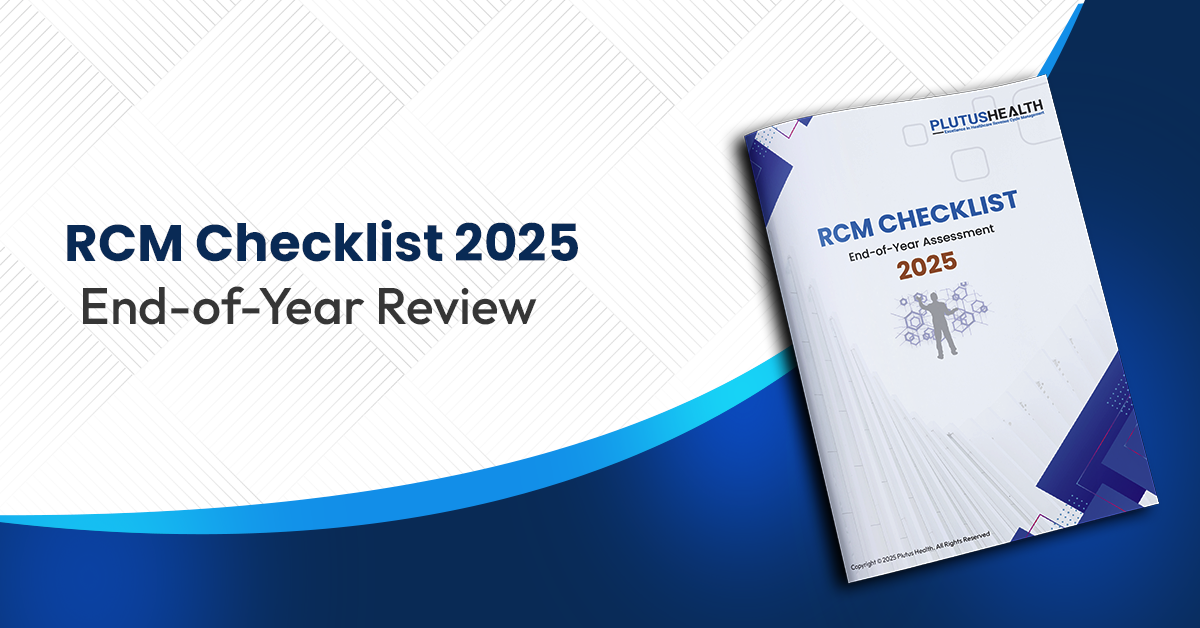5 Things to Check Before Submitting an ASC Claim
Maintaining a healthy revenue stream for most ambulatory service centers depends mainly on the ASC claims generated from medical billing.
With the constant changes to payers' authorizations, ASC’s must follow best practices when going through the authorization process with payers and providers to approve medically necessary services and to obtain reimbursements.
Payers and ASCs are inconstant disagreement because while ASC centers are trying to get paid for their services on one end, payers are, on the other end, trying to reduce unnecessary payments. Therefore, ASC centers should pay careful attention to ASC claims before submission. At every stage of the billing process, from patient information collection to verification, ASCs should avoid making unnecessary mistakes that will increase the time spent on claims or cause denials.
Authorization checks, patient verification, and eligibility of procedures are some basic things to check before submitting an ASC claim.
This blog lists five things to check before submitting an ASC claim to avoid errors that could lead to delayed payments and denials:
1. Verify patients Eligibility, Coverage and Benefits are correct
Rejected claims often stem from inadequate coverage by payers and eligibility for certain reimbursements.
Most ASC centers don't give much consideration to the confirmation of insurance coverage before filing a claim, which is not efficient because payers and insurance plans don't cover all procedures. Thus, the payers deny such claims.
Therefore, before submitting an ASC claim, ASC centers should take extra steps to verify insurance coverage, either through direct contact with the payer and sometimes with the patient, or through engagement software through the patient and/payer website.
Read more about unwrapping strategies to simplify insurance discovery and reduce insurance denials here.
2. Check Patient Information
Incorrect or inadequate information is a leading cause of claim denials.
Patient demographic data such as names, social security numbers, etc., are critical pieces of information that need to be checked for accuracy before claim submission.
Therefore, clinicians and coders should adopt good clinical documentation strategies to ensure information flows freely and correctly before submitting an ASC claim. If your organization struggles with assessing patient information, here are some tips to help improve clinical documentation.
3. Check if the codes used in the procedure match those in the authorization
While the authorization process to check with payers on procedures still largely remains manual, adopting an effective software solution to conduct checks on codes used in claims with the actual codes provided in the documentation is ideal. Adopting an automated system for these checks not only helps discover errors on claims before submission and prevents denials but provides a faster and lower error rate than manual processes.
When carrying out this screening process, use experienced coders and clinicians to further reduce the error margin.
4. Check for Authorization Dates.
Authorizations come with an expiration date, and if claims get submitted after this date, they get denied. To prevent this, always take note of authorization dates and ensure procedures are delivered within the stipulated time. For example, coding centers should contact insurance companies to extend the authorization period for a rescheduled procedure. This practice of checking the authorization date period helps organizations prepare and submit claims before the authorization period expires, thereby preventing denials.
5. Watch out for Coding Errors and Approved Medical Procedures
Coding errors account for a significant amount of revenue lost in most ASCs. Therefore, screening our claims for common coding errors is critical before submission.
Ensure clinicians and coders have entered the correct code regarding patients and that modifiers, if used, follow the proper method of usage.
On the issue of coverage, ASC’s has limited procedures that are covered by payers, and those procedures that are covered have specific criteria that must be met and adhered to. Most medical providers have a list of covered procedures, so before submitting a claim, double-check to see if the procedure is eligible. Some of the criteria include elective, urgent, and not life-threatening procedures. It is very important to accurately reflect the correct data is selected to allow for immediate reimbursements.
Key Takeaways
- Claims reimbursement processes play a crucial role in the revenue lifecycle of most ASC’s, as they ensure payers are paid for covered procedures they perform.
- Delayed payments, time-consuming correction of denied claims, and loss of payments are direct results from a poorly planned and/or executed claims process.
- Organizations and ASC personnel should follow straightforward steps and best practices before submitting a claim to a payer to prevent a claim denial.
- Ensuring correct patient information and that claims are still valid within the authorization period should always be checked before submitting claims.
- Using automated software and checking for coding discrepancies helps catch and correct coding errors before submission.
Liked the blog? Share it
FAQs


ABA providers are grappling with high staff turnover (up to 65%), rising burnout, administrative overload, and stagnant reimbursement rates. These challenges directly impact care continuity, clinical outcomes, and operational performance.


Operational inefficiency costs ABA teams up to 10 hours per staff member per week, contributing to burnout, denied claims, and longer accounts receivable (A/R) cycles. These inefficiencies ultimately result in reduced revenue and patient dissatisfaction.


Burnout leads to costly turnover, lower client retention, and decreased productivity. Recruiting and replacing a BCBA or RBT can cost up to $5,000 per hire, plus months of lost revenue and disruption to morale.


High-performing ABA organizations invest in clear career pathways for BCBAs and RBTs, align compensation with market benchmarks, and foster peer-led mentorship, flexible schedules, and wellness programs.


Automation tools like Plutus Health's Zeus streamline eligibility verification, denial management, and billing, reducing manual workloads by 5–10 hours weekly per clinician and improving clean claim rates by 95%.


Outsourcing revenue cycle management can improve collections, reduce denials by up to 30%, and free clinicians from billing-related admin tasks, resulting in better client care and financial outcomes.


One $200 million ABA network partnered with Plutus Health to automate eligibility and accounts receivable (A/R) processes. The result: $2M reduction in legacy A/R and a 97% Net Collection Rate.


By improving operational efficiency, investing in technology, and ensuring workforce stability, ABA leaders can align outcomes with reimbursement. Plutus Health supports this transition with scalable RCM and automation strategies.
FAQs


ABA therapy billing is the process of submitting claims to insurance or Medicaid for Applied Behavior Analysis services provided to individuals with autism or developmental disorders. It includes using correct CPT codes, proper documentation, and adherence to payer-specific policies.


Common CPT codes for ABA therapy in 2025 include:
- 97151 – Assessment and treatment planning
- 97153 – Direct therapy with the patient
- 97155 – Supervision and modification of behavior plan
- 97156 – Family adaptive training
- Always check with payers for any annual changes.


To bill Medicaid for ABA services, providers must ensure credentialing is complete, services are pre-authorized, and claims use the correct codes and modifiers. Medicaid requirements vary by state, so always follow state-specific billing rules.


Common ABA billing mistakes include:
- Incorrect or missing CPT codesplan
- Lack of documentation or treatment
- Uncredentialed providers rendering services
- Submitting duplicate or late claims


Without proper credentialing, providers can’t get reimbursed. Insurance and Medicaid require that BCBAs, RBTs, and organizations are credentialed and contracted. Delays in credentialing often cause revenue losses and claim rejections.
FAQs


CMS proposes a 2.4% increase in Medicare ASC payment rates, contingent on meeting ASCQR quality reporting requirements. Plutus Health helps ASCs meet these compliance benchmarks by integrating quality reporting data into RCM workflows, ensuring eligibility for full payment updates.


The ASC Covered Procedures List will expand by 547 procedures, including cardiology, spine, and vascular surgeries. Plutus Health supports expansion into new service lines by customizing RCM processes for high-acuity procedures, minimizing claim denials during the transition.


Site-neutrality narrows the payment gap with hospital outpatient departments, enhancing ASCs' cost-efficiency appeal. Plutus Health helps leverage this advantage in payer negotiations by providing performance dashboards and cost-justification analytics to secure stronger reimbursement terms.


Complex procedures increase denial risk and slow cash flow. Plutus Health's automation-first RCM model delivers 95%+ clean claim rates, reduces A/R days, and safeguards margins, even as your case mix becomes more complex.
FAQs


A hybrid RCM model combines in-house tasks like scheduling, intake, and patient communication with outsourced billing support for claims, denials, and A/R follow-up. Plutus Health enables this model with automation and expert teams.


Frequent CPT code updates, variable session lengths, high no-show rates, and sensitivity around patient collections make behavioral health billing uniquely challenging. Hybrid RCM helps strike a balance between compliance and patient care.


Tasks requiring patient interaction—like intake, eligibility checks, copay collection, and documentation—are best kept in-house, while backend processes can be outsourced.


Outsourcing denial management, claims scrubbing, and payment posting improves clean claim rates, reduces A/R days, and scales capacity without adding staff.


Plutus Health delivers 97%+ clean claim rates, AI-powered denial prediction, and 48-hour claim turnaround. Our hybrid RCM solutions provide behavioral health CFOs with visibility and control, while enhancing financial performance.
FAQs


Payment complexity, high out-of-pocket costs, increasing denials, and value-based care requirements are pushing providers toward more transparent, tech-supported payment systems.


Patients now act like consumers. They expect clear cost estimates, simple bills, digital payment options, and flexible financing.


AI, automation, and digital tools streamline estimates, reduce denials, support payment plans, and allow faster collections through mobile and online payments.


Complex billing questions, insurance confusion, and financial stress require a compassionate approach. Advocates guide patients and protect trust in clinical care.


Plutus Health supports providers with AI-driven denial prevention, predictive analytics, digital payment tools, patient financing, and a seamless platform, such as AnodynePay.


















































